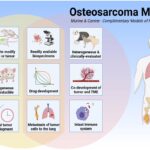
In 2017, my father was diagnosed with throat cancer & chemotherapy was advised. The cancer was stage 4th cancer. It was very painful. When his treatment started, the doctors advised him to do chemotherapy only. This pain was very terrible.
At that time, I gained knowledge about chemo through special discussions and talks with all the doctors. Unfortunately, today my father is no more among us, but the knowledge of chemotherapy is present today. Based on these facts, today I am sharing information about chemo.
First of all, any mention or thoughts of cancer treatment instantly lead one’s mind to chemotherapy. While different cancers are treated in a variety of ways, it is usually a combination of available options including radiotherapy, surgical removal of the tumor, targeted drugs, etc.
Table of Contents
However, people misunderstand chemo and get scared of its name. One of the main reasons behind this is that people often value the side effects of chemo more than its benefits. So, let us know what is chemotherapy.
What is chemotherapy?
As the name suggests, chemotherapy in cancer is essentially a treatment in which cancer cells are rapidly destroyed with the help of drugs. Chemo can either be used as a sole treatment depending on a particular type of cancer or in combination with others as mentioned earlier. It is usually given as an intravenous injection and sometimes as an oral medication.
Why and when is it used?
Cancer cells divide at a rapid rate, and they tend to spread to other parts of the body, away from the organ where the cancer originated. Because chemotherapy is injected into the bloodstream, the drugs work together wherever the cancer is growing, while surgery and radiotherapy can be used mainly on the original cancer tissue.
In treating cancer
Chemo drugs help kill cancer cells and in many cases, such as blood cancer, it helps cure the cancer completely.
As adjuvant chemotherapy
It helps remove hidden cancer cells that may remain after other major treatments, such as surgery.
As neoadjuvant therapy
Chemo may be used to reduce the size of the tumor so that other treatments, such as radiation or surgery, are possible.
Palliative chemotherapy
To reduce symptoms – In cases where chemo or any other treatment cannot cure or control the cancer, chemotherapy is used to reduce the patient’s symptoms and improve their quality of life to some extent.
Additionally, when chemo is used along with or followed by other treatments being given to patients, it essentially ensures that any remaining cancer cells, anywhere in the body, are also destroyed.

You will also be surprised to know that chemo is not only used to treat cancer but is also used in the treatment of some immune system disorders such as rheumatoid arthritis and lupus. However, the intensity of chemotherapy drugs used in this is quite low. It is also used to prepare a person’s body for a bone marrow transplant, where it is used to remove cancer cells in the blood-forming bone marrow.
Preparing for chemotherapy
Chemo, which is ingrained in people’s minds as a fear, is very necessary to cure cancer. Before you go for a chemo appointment if the condition is serious, you need to prepare yourself mentally and physically. Your oncologist and healthcare team will tell you about the medications that will be used to treat you and what you can expect during chemo sessions.
Before the actual therapy begins, each patient is evaluated to see whether he or she is healthy enough for chemo. Doctors check blood pressure, body temperature, and nutritional status and generally recommend blood tests like hemoglobin, white cell count, liver and kidney tests, and echo tests for the heart to understand the health condition in the process of chemo. Is given. Based on the results of these tests, oncologists determine the patient’s suitability for chemo. Some other preparations may be required:
Dental checkup
One of the first things told to patients undergoing chemo-therapy is to treat all dental infections. Consult your dentist for this. The main reason for this is that chemo-therapy reduces the body’s immunity and if there is an existing dental infection it can complicate matters. Therefore, it is recommended to treat all cavities and gum diseases before starting chemo-therapy sessions.
Intravenous Chemotherapy (IV) Chemotherapy Preparations
If an oncologist has recommended IV (intravenous) chemotherapy for his patient, the procedure involves placing a catheter into the patient’s hand or arm. The IV cannula may remain in your vein for a few days, or your caregiver may place a new IV before each chemo-therapy dose. You can talk to your doctor once regarding this.
When chemo-therapy cycles are expected to last months, doctors insert a device called a ChemoPort under the skin of the chest, which is connected directly to major veins that enter your blood circulation. Whenever chemo is done, the nurse will insert the needle directly into the chemo port and connect it to the drug dispensing line.
Due to this, small veins do not get damaged due to repeated chemo.
Information about possible side effects
A lot is said about the side effects of chemo. However, not every patient experiences side effects from all chemo drugs. Before a patient begins a chemo session, he or she is informed about what side effects may occur and when. This gives the patient and their family members a clear picture going forward.
Plan your home and work
Every chemo patient is told in advance that they are given chemotherapy as an outpatient procedure and during this time the patient can go about their regular activities, in some cases, the patient may need some help with the work.
Your first appointment
A patient’s first chemo appointment can be scary but with the right information from the health team and oncologist, the appointment can be made less stressful. Patients may be advised to eat a light meal and get adequate rest the previous night.
For assistance regarding treatment, and to book an appointment on priority, you can contact our Care Manager.
How is chemotherapy done? (Process)
When your doctor recommends the option of chemo for cancer treatment, it is very important to understand its process, which helps you in deciding the treatment. The dose and duration of the chemo procedure depend on the type and complexity of the cancer when it is used.
Chemotherapy is done in different ways, such as:
Oral chemotherapy
This involves giving medicine in the form of tablets or capsules.
Chemotherapy injection
This is the most common way to administer chemo when patients are injected with chemo drugs during treatment. Such injections are given either intravenously or through a chemo port, where the medicine directly enters the bloodstream.
How chemotherapy is done in a specific part of the body
Many times, chemo drugs are delivered directly into the parts of the body where the cancer has grown. For example, if the cancer has spread widely in the abdomen, hipec is used to be applied directly to the cancerous tumor using chemotherapy drugs. Similarly, others include intrapleural, which is inside the chest; intrathecal, inside the spine; and intravesical, inside the bladder.
Depending on the chemo procedure, sometimes the patient is allowed to consume oral chemotherapy medicines at home. The frequency with which chemotherapy is given depends largely on the type of cancer, the stage of the cancer, the type of drug, and how well the patient’s body recovers after each session.
Side effects and risks of chemotherapy
People know a lot about chemotherapy, but in their minds, there are many misconceptions about this therapy, due to which a fear generally prevails in the patient and his family, regarding this.
These chemodrugs are made to kill such fast-growing cells in cancer. When a chemotherapy drug is given, it travels throughout the body and attacks normal, healthy cells that are rapidly growing. The damage to these healthy cells causes some side effects, and it is normal to be cautious during this part of cancer treatment.

In general, rapidly growing cells are most damaged by chemo, including cells in hair follicles, blood-forming cells in the bone marrow, and cells in the mouth, digestive tract, and reproductive system.
These effects can be broadly classified into immediate effects and late effects when these effects appear after the chemotherapy session.
According to the American Cancer Society, here are some of the more common side effects caused by chemotherapy:
>> Tiredness
>>Tair fall
>> Infection (which mainly manifests as fever)
>> Anemia
>> Nausea and vomiting
>> Changes in appetite
>> Constipation
>> Diarrhea
>> Problems swallowing anything along with sore mouth, tongue and throat
>> Nerve and muscle problems such as numbness, tingling, and pain
>> Skin and nail changes such as dry skin and discoloration
>> Urine and bladder changes and kidney problems
>> Change in weight
>> Mood swings
>> Changes in libido and sexual function
>> Reproductive problems
These side effects appear within a few minutes to a few hours after a chemotherapy session and often resolve on their own with or without any medication. However, some of these side effects are late (not appearing until a few months or years after treatment) and are more long-lasting.
Hair loss after this procedure is very common. However, the hair grows back after treatment is completed. There is no way to tell you what will happen in your next chemotherapy session or how your body will accept the treatment. But, chemotherapy has been one of the most successful treatments to beat cancer to date and many advancements continue to be made in this field to make the entire process more comfortable for patients.
Disclaimer:
All the articles published in “Health Alpha” are prepared based on various sources like doctors, the internet, experts, and books. The facts and information mentioned in the article have been checked and verified by Health Alpha.
All instructions have been followed while preparing this article. The related article has been prepared to increase the information and awareness of the reader. Health Alpha does not make any claims nor take any responsibility regarding the information and information provided in the article.
For more information about the related diseases mentioned in the above article, consult your doctor and do not take any medicine without medical advice.
Views: 0













